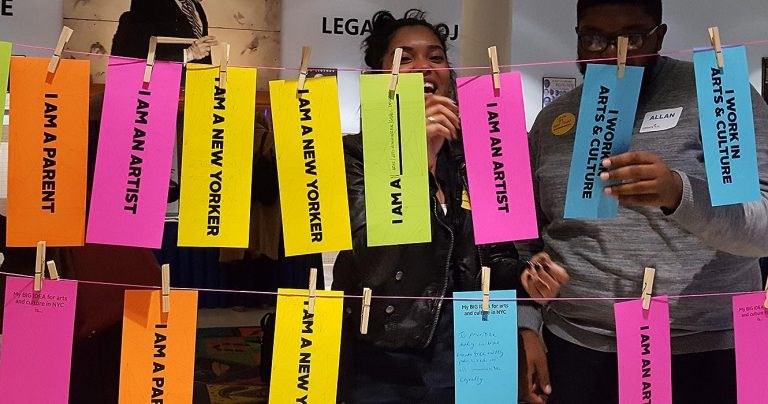Following months of public engagement with nearly 200,000 New Yorkers, CreateNYC aims to achieve greater cultural equity, inclusion and access

On Wednesday, Mayor de Blasio, Cultural Affairs Commissioner Tom Finkelpearl and Council Majority Leader Jimmy Van Bramer released CreateNYC, a blueprint for expanding on the city's cultural sector by providing targeted investments to address historically underserved communities across all five boroughs and to cultivate a diverse, equitable and inclusive cultural workforce that reflects all New Yorkers.
"New Yorkers of color are far too underrepresented in our cultural workforce," said First Lady Chirlane McCray. "Only 38 percent of employees at cultural organizations identify as individuals of color."
The release of CreateNYC follows months of intensive public engagement spearheaded by the Department of Cultural Affairs and project partner Hester Street Collaborative. Since fall 2016, nearly 200,000 New Yorkers participated in the CreateNYC process, including 30,000 residents who showed up to more than 400 live events and over 150,000 who participated online.
The city announced a number of immediate steps towards addressing identified needs, including funding from the mayor's office, and an additional $5 million from city council, which will be allocated to:
- increase support for the cultural life of low-income communities and underrepresented groups;
- promote greater diversity, equity and inclusion in the cultural workforce through professional development programs and collaborations such as CUNY Cultural Corps, which places undergraduate students in paid internships at cultural organizations;
- increase support for members of cultural institutions in low-income communities;
- increase language access through translations services for communications and cultural programming at cultural organizations across the city to reach a broader, more inclusive audience;
- support individual artists;
- expand cultural access for people with disabilities and funding for disability arts, as well as creating spaces that are physically accessible;
- establish a culture cabinet of agencies to coordinate and promote engagement between the city and NYC's cultural community.
BRIC President Leslie G. Schultz called the release of the cultural plan a "watershed moment."
"To take a step back and consider collectively what goals we want to advance with our support of the arts sector is a remarkable achievement," said Schultz.



